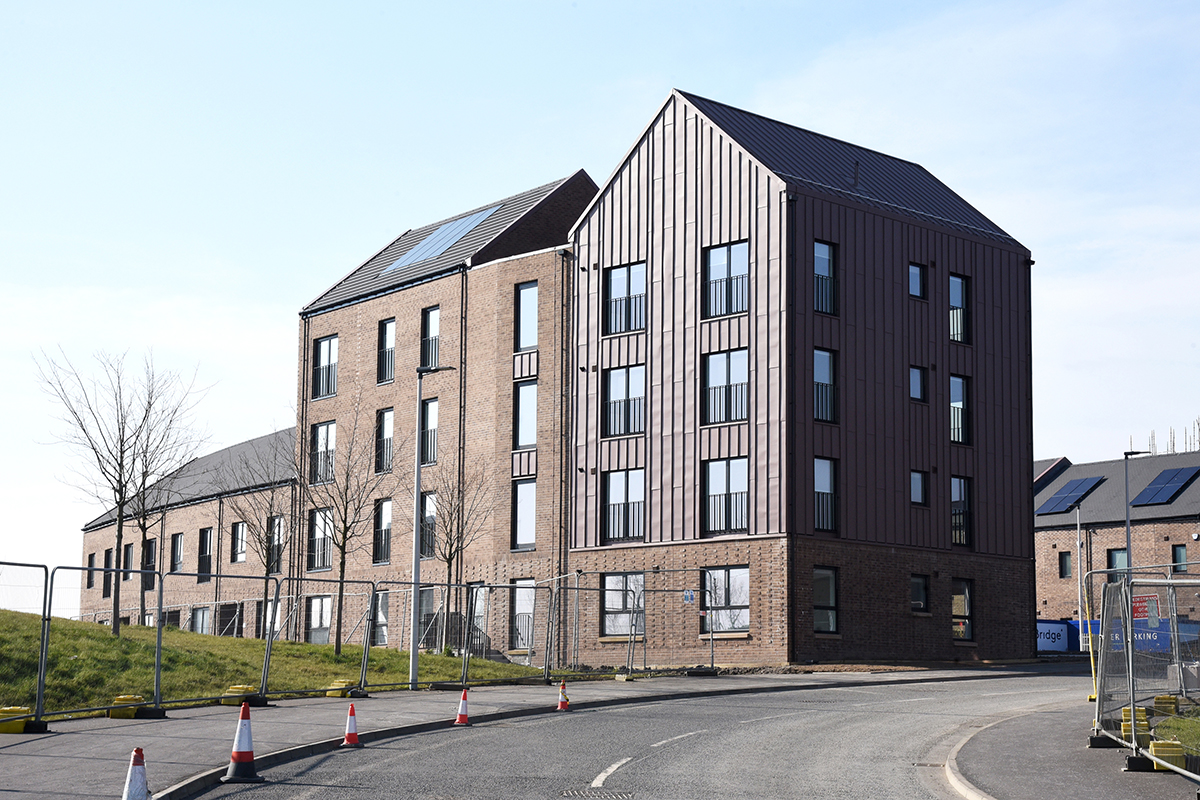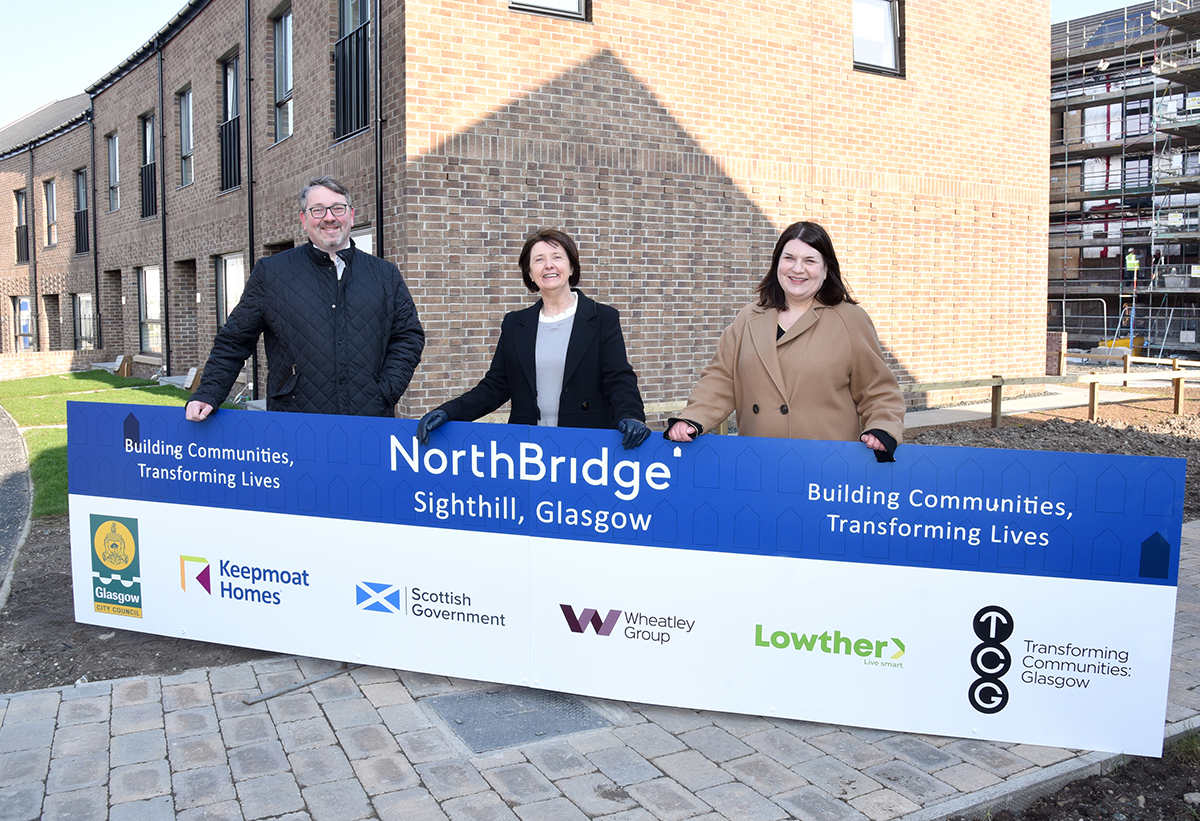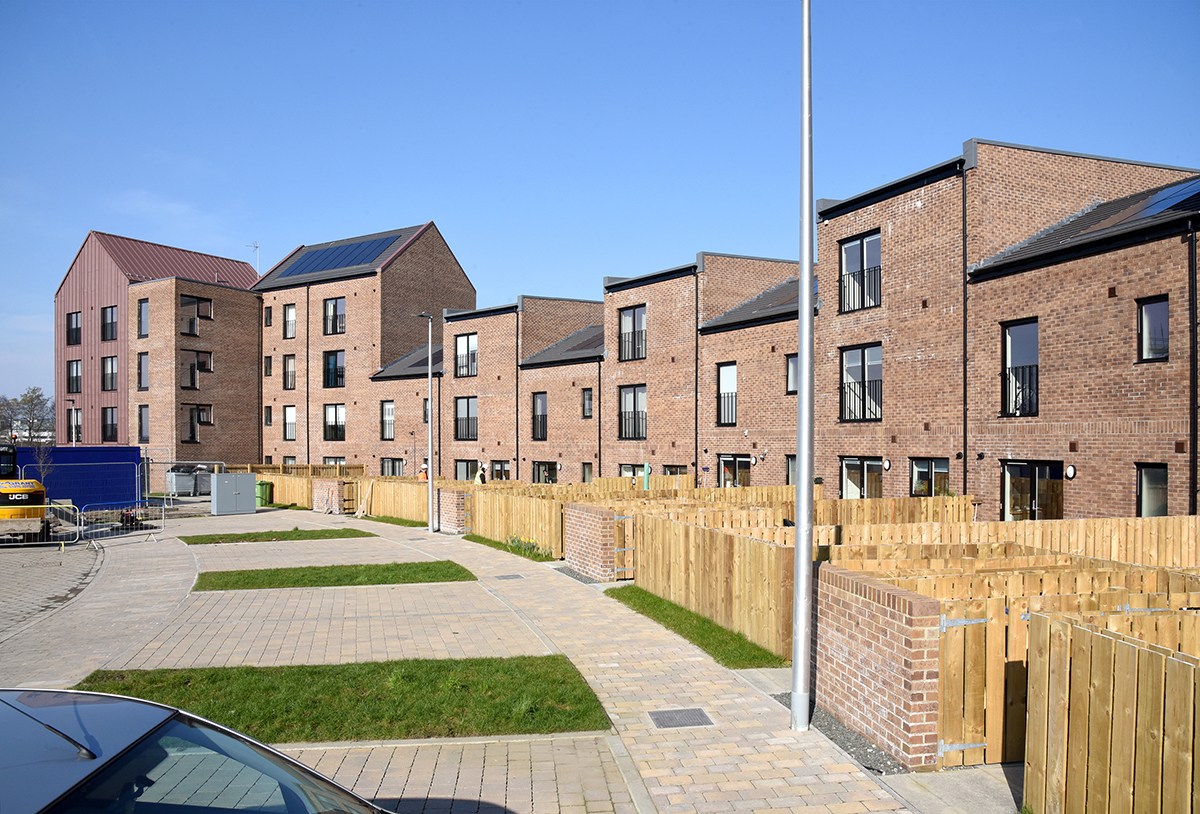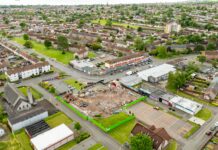
THE leader of Glasgow City Council has told Project Scotland that the work seen in the Sighthill neighbourhood will be replicated across the city, as the largest regeneration project in the UK outside of London enters phase two.
Project Scotland was on-site as Keepmoat Homes completed the first phase of works at the 50-hectares Northbridge site, which lies just a 15-minute walk from George Square in the centre of Glasgow.
The wider £250 million development will see the delivery of 1,000 homes in total, alongside an active travel bridge over the M8 linking it with the city centre, a range of green space, a new school campus which has already opened, and commercial units.
All this comes in place of 1970s high-rises, which were demolished to make way for the regeneration.
“This is the biggest regeneration project of its kind outside of London in the UK,” Glasgow City Council leader Susan Aitken told Project Scotland. “The scale of it is something that hasn’t been attempted in Glasgow for a long time, so the fact it is (already) so successful is something that we definitely want to build on.
“This can’t just be Sighthill and then stop; we want to see more of this in other neighbourhoods; more new communities across Glasgow which are a bridge between the folk that’ve always lived there and people who come in.”

Ms Aitken hailed the ‘extremely high-quality build’ standard of the one to five-bedroom houses and flats delivered in the first phase, highlighting their energy efficiency qualities and space for study and/or home working – which she revealed were decided upon pre-pandemic.
“I think a lot of the principles applied here in Sighthill are even more applicable post-pandemic,” she added. “I think, undoubtedly, we will look at the designs of both homes and neighbourhoods in the light of everything that’s happened; the fact that people have been working from home more, they want to be able to access things in their local neighbourhood more. Actually, Sighthill has got that in mind, so there’s more accessible housing, there are larger family homes which is something we’ve been lacking in Glasgow for a long time.
“Crucially I think, even before the term was invented and people were thinking about it, Sighthill was already being planned as a 20-minute neighbourhood – and we know that’s something that’s going to matter, not just post-pandemic, but also for the sustainable lives that we need to live if we’re going to achieve our net zero targets. We need people to be able to connect with the city and the wider city and the physical connections that’ve been put in place, such as the new bridge, will allow that but also to live within their own neighbourhoods and access everything that they need to be able to.”

Data held by Glasgow City Council revealed that its city centre was hit harder than any other in the UK outside of London by the pandemic in terms of loss of footfall. Ms Aitken said this was caused ‘in large parts’ because previous city fathers ‘deliberately depopulated’ the centre – a decision she said the local authority wants to reverse.
“We started to reverse that (depopulation), but we didn’t do it in time for the pandemic coming along for it to have the impact that it needed, but we know that we need to build resilience into city centres in the future,” Ms Aitken said. “We need to have them as mixed-used, not just places for people to shop, but be places where people live their lives. Retail and offices will still be enormously important; the city centre will still be a place for people to work as it recovers, but it also needs to be a place for people to live and just generally do the things that they do in their lives and also for neighbourhoods like this to be able to connect in with the city centre. All of that is an enormous part of not just recovery, but building long-term resilience for future shocks – as we can’t assume we won’t have something like this (the pandemic) again.”
Key to the site’s design is the active travel bridge, which is currently being constructed by BAM. It will allow residents to walk to the city centre via a route that prioritises safe walking, wheeling and cycling. Ms Aitken said she has hopes that residents will be able to treat the centre as ‘their local shopping area’ whilst also being able to rely on the amenities within the site. The connectivity on show is something the council leader said she wants to see across the city.

“The new bridge is a sign of what we’ll see much more of around Glasgow, making it much more easier for people to walk, cycle and wheel locally,” she said, before adding that she anticipates the recently approved £475 million city-wide cycle network will ‘make Glasgow one of the best cycling cities in the UK’.
“It’s the way things are going to be from now on; there will be a prioritisation of people and the way people move around outside of private cars – the hierarchy will be people walking, wheeling and cycling, with public transport and private cars at the bottom as we know that’s what we need for a healthier, safer and more sustainable not just city and neighbourhood, but planet as well.”
In concluding her visit to the site, Ms Aitken said she anticipates the remaining builds will ‘go like hot cakes’ – with her envisioning it to ‘quickly’ become a ‘really vibrant, busy and diverse neighbourhood’.












